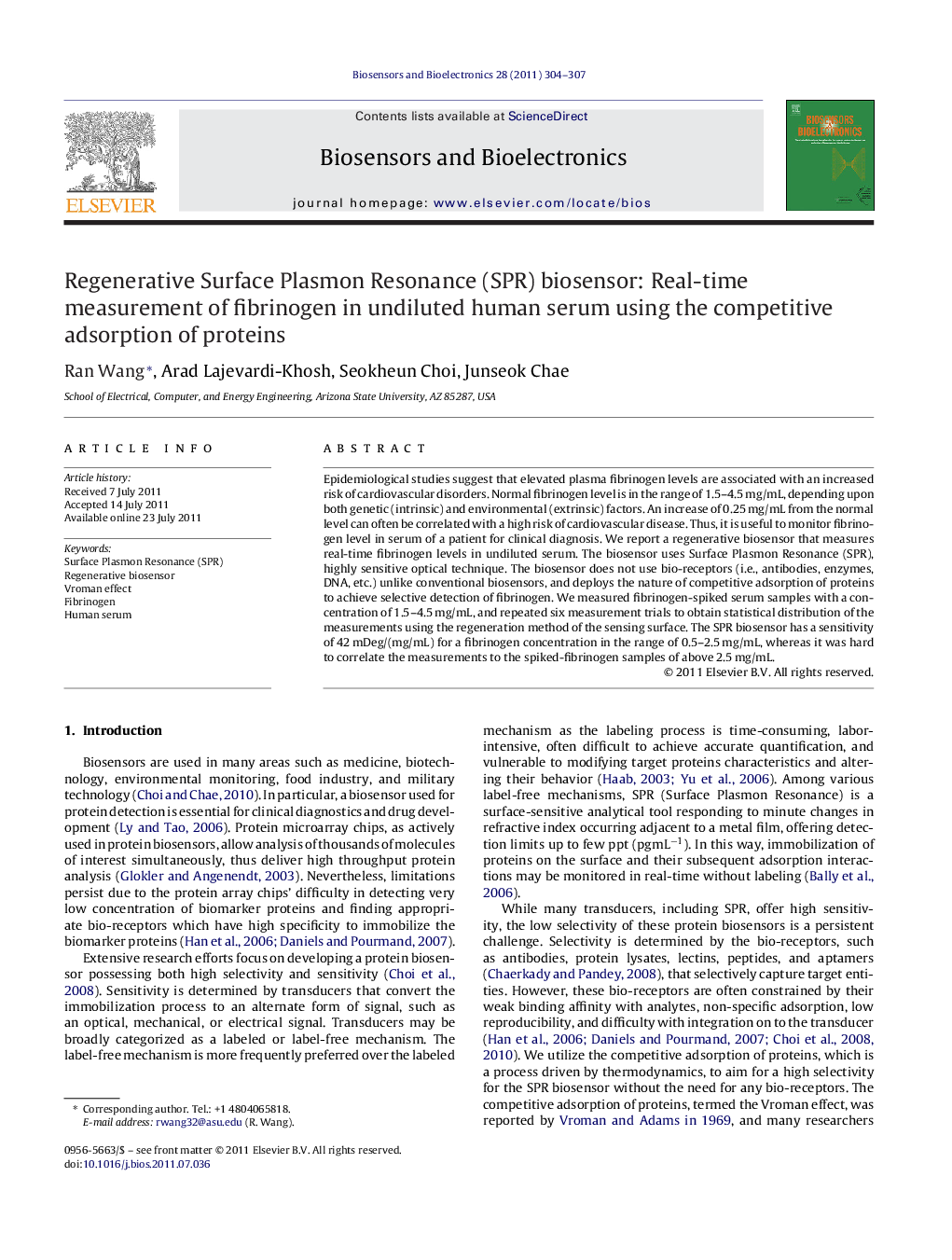| Article ID | Journal | Published Year | Pages | File Type |
|---|---|---|---|---|
| 10429487 | Biosensors and Bioelectronics | 2011 | 4 Pages |
Abstract
Epidemiological studies suggest that elevated plasma fibrinogen levels are associated with an increased risk of cardiovascular disorders. Normal fibrinogen level is in the range of 1.5-4.5Â mg/mL, depending upon both genetic (intrinsic) and environmental (extrinsic) factors. An increase of 0.25Â mg/mL from the normal level can often be correlated with a high risk of cardiovascular disease. Thus, it is useful to monitor fibrinogen level in serum of a patient for clinical diagnosis. We report a regenerative biosensor that measures real-time fibrinogen levels in undiluted serum. The biosensor uses Surface Plasmon Resonance (SPR), highly sensitive optical technique. The biosensor does not use bio-receptors (i.e., antibodies, enzymes, DNA, etc.) unlike conventional biosensors, and deploys the nature of competitive adsorption of proteins to achieve selective detection of fibrinogen. We measured fibrinogen-spiked serum samples with a concentration of 1.5-4.5Â mg/mL, and repeated six measurement trials to obtain statistical distribution of the measurements using the regeneration method of the sensing surface. The SPR biosensor has a sensitivity of 42Â mDeg/(mg/mL) for a fibrinogen concentration in the range of 0.5-2.5Â mg/mL, whereas it was hard to correlate the measurements to the spiked-fibrinogen samples of above 2.5Â mg/mL.
Related Topics
Physical Sciences and Engineering
Chemistry
Analytical Chemistry
Authors
Ran Wang, Arad Lajevardi-Khosh, Seokheun Choi, Junseok Chae,
